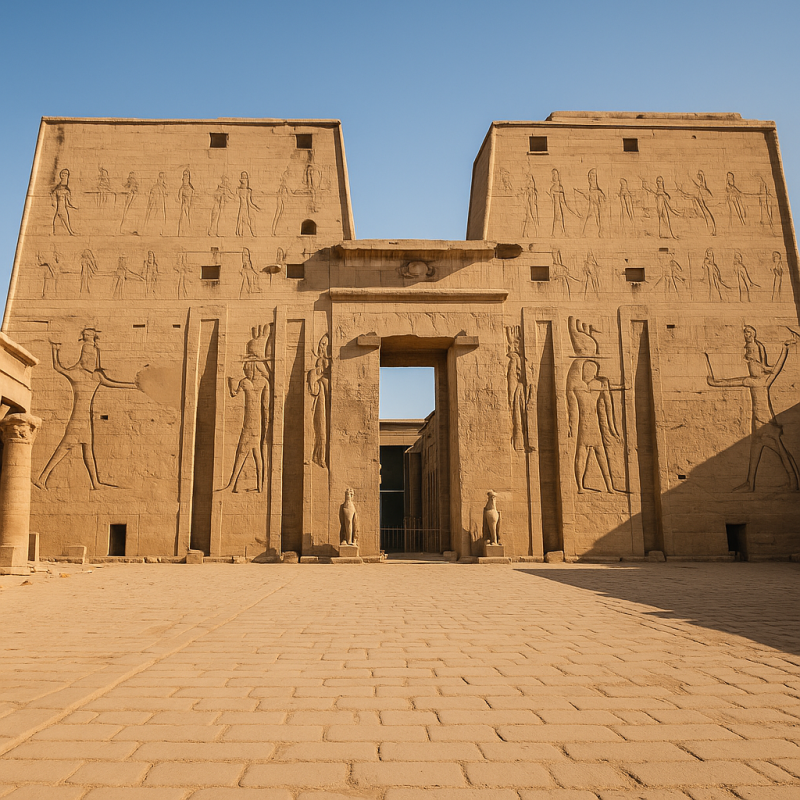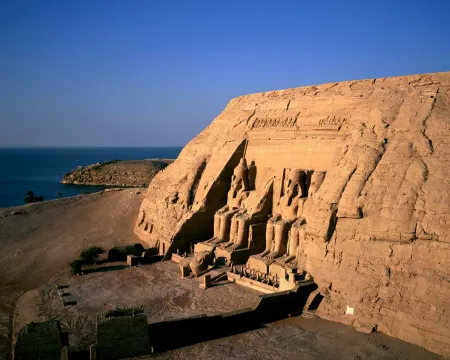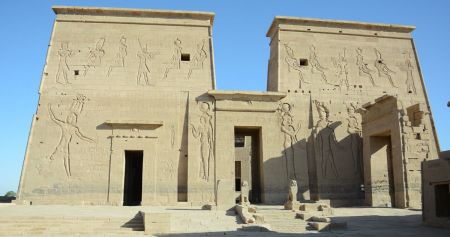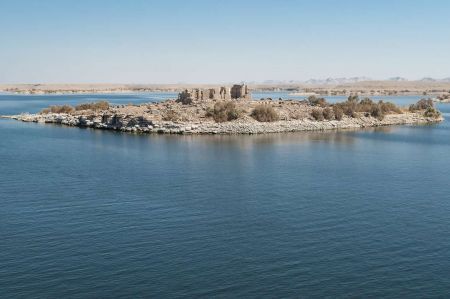Temple of Horus: The Timeless Guardian of Edfu

The Temple of Horus in Edfu is one of Egypt’s most iconic treasures, an architectural masterpiece that has defied time and stands today as the most well-preserved ancient temple in the country. Dedicated to Horus, the falcon-headed god of protection and kingship, this grand monument encapsulates the might of the Ptolemaic dynasty and the deep spiritual beliefs of ancient Egypt. Its towering pylons, intricate reliefs, and colossal courtyards narrate stories of gods, pharaohs, and cosmic battles that shaped Egyptian mythology. For travelers, historians, and seekers of ancient wisdom, the Temple of Horus is more than stone—it is a living testimony of Egypt’s spiritual legacy.
History and Construction of the Temple of Horus
Built during the Ptolemaic period between 237 and 57 BCE, the Temple of Horus reflects both Greek influence and deep-rooted Egyptian tradition. Construction began under Ptolemy III Euergetes and continued for nearly two centuries. Despite the presence of Greek rulers in Egypt, the temple strictly adhered to the architectural and symbolic principles of ancient Egyptian temples. Its dedication to Horus, one of the most revered gods in the pantheon, highlights the significance of divine kingship and the eternal struggle between good and evil.
Symbolism of Horus in Ancient Egypt
Horus represented protection, justice, and rightful rulership. As the son of Isis and Osiris, Horus avenged his father’s death by defeating his uncle Seth, symbolizing the triumph of order over chaos. Within the temple’s reliefs, this battle is depicted vividly, reaffirming the divine role of kings as earthly embodiments of Horus. To the ancient Egyptians, entering this temple was not just a religious act but a reaffirmation of cosmic balance.
Architectural Grandeur of the Temple
The Temple of Horus is massive, covering nearly 137 meters in length and rising with pylons that soar over 36 meters high. Its design follows the traditional temple layout: monumental pylons at the entrance, followed by a vast open courtyard, a hypostyle hall with towering columns, and an inner sanctuary that once held the sacred statue of Horus.
The Pylons – Guardians of the Temple
The grand pylons at the entrance are adorned with carvings of Horus striking down enemies, a symbolic representation of divine protection over Egypt. Standing before them, visitors are immediately reminded of the temple’s role as both a spiritual sanctuary and a fortress of divine order.
Hypostyle Halls and Courtyards
Inside, massive lotus-topped columns support ceilings carved with astronomical symbols. The open courtyards allowed worshippers to gather, while the inner halls were restricted to priests and royalty. The progression from the outer court to the inner sanctuary mirrors the spiritual journey of moving closer to the divine.
Sacred Rituals and Festivals
The Temple of Horus was not just a monument—it was a living center of worship. Rituals, offerings, and festivals were held here to honor Horus and reenact his mythical battle with Seth. The most famous celebration was the annual “Sacred Marriage” festival, which symbolized the union of Horus of Edfu with Hathor of Dendera, reinforcing fertility, prosperity, and cosmic harmony across Egypt.
Pilgrimage and Offerings
Pilgrims would bring offerings of food, perfumes, and precious goods to please Horus. Priests conducted rituals, chanted hymns, and performed purification ceremonies to maintain the temple’s divine energy. These sacred acts were believed to ensure Egypt’s prosperity and the pharaoh’s legitimacy.
Inscriptions and Reliefs – Ancient Texts Carved in Stone
The walls of the Temple of Horus are an encyclopedic archive of ancient Egyptian religion and culture. Over 100,000 inscriptions are carved into its walls, detailing myths, rituals, astronomical knowledge, and royal decrees. These carvings remain one of the richest sources of information about the Ptolemaic period and ancient Egyptian religion.
The Myth of Horus and Seth
The reliefs vividly depict the eternal battle between Horus and Seth. Scenes show Horus avenging his father Osiris, a myth central to Egyptian cosmology. These carvings provided worshippers with a visual representation of divine justice and reinforced the king’s authority as Horus’ earthly successor.
Daily Rituals of the Priests
Other inscriptions describe daily temple rituals, including the awakening of Horus’ statue at dawn, purification with incense and water, and offerings of bread, wine, and meat. These rituals were meticulously recorded to ensure their continuity across generations.
Rediscovery and Preservation
Although the temple was partially buried under sand and debris for centuries, it remained remarkably intact. Rediscovered in the 19th century by French Egyptologists, the Temple of Horus underwent significant excavation and restoration, revealing its original magnificence. Today, it remains a highlight of Nile cruises and one of the most visited temples in Egypt.
Why the Temple Survived So Well
Unlike other temples, the Temple of Horus suffered little destruction because of its remote location in Edfu. While invaders and natural forces damaged many ancient monuments, this sanctuary stood resilient, shielded by sand that ironically preserved its carvings and architecture.
Visitor Experience at the Temple of Horus
Modern travelers walking through the Temple of Horus experience a journey through time. Its towering gateways, shadow-filled halls, and echoing chambers create an atmosphere of mystery and reverence. Guided tours often highlight key myths, architectural marvels, and ritual significance, making it a must-visit destination for anyone exploring Upper Egypt.
Best Time to Visit
The ideal time to visit Edfu is between October and April, when Egypt’s climate is cooler. Nile cruises frequently stop at Edfu, offering tourists a chance to explore the temple in a few hours, though its grandeur deserves much longer.
Legacy of the Temple of Horus
The Temple of Horus is not just a historical site—it is a cultural icon. It bridges the ancient with the modern, the mythical with the historical, and continues to inspire awe. For Egyptologists, it remains a cornerstone for understanding Ptolemaic Egypt. For travelers, it is a timeless experience of walking in the footsteps of pharaohs and priests.
Frequently Asked Questions about the Temple of Horus
Where is the Temple of Horus located?
The Temple of Horus is located in Edfu, a city on the west bank of the Nile between Luxor and Aswan.
Who built the Temple of Horus?
Construction began under Ptolemy III in 237 BCE and was completed in 57 BCE during the reign of Ptolemy XII.
Why is Horus important in Egyptian mythology?
Horus represents kingship, justice, and divine protection. He was the avenger of Osiris and the eternal enemy of chaos, embodied by Seth.
What makes the Temple of Horus unique?
It is the most well-preserved temple in Egypt, with its carvings, inscriptions, and architecture almost completely intact after 2,000 years.
Can visitors enter the sanctuary of the Temple of Horus?
Yes, visitors can explore the temple’s inner sanctuary, where the statue of Horus once stood, though the sacred rituals are no longer performed.















